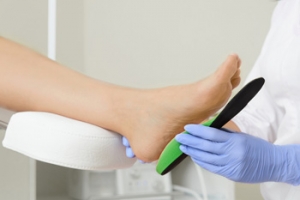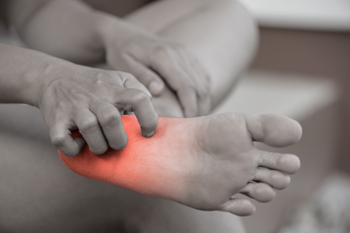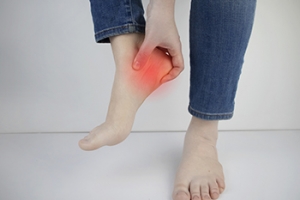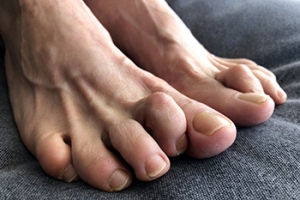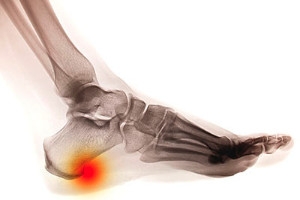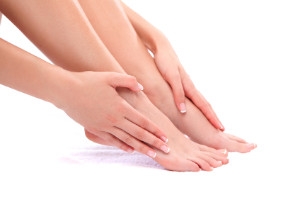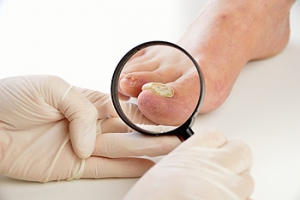Connect With Us
Featured Articles
Super User
Custom Orthotics Can Help Ease Pain Due to Arthritis
People with rheumatoid arthritis or osteoarthritis are no strangers to foot pain and inflammation. Custom orthotics can often ease the pain and make walking and performing daily tasks more manageable. Orthotics, and custom orthotics in particular, are designed to spread the weight of the body more evenly across the feet, reduce pressure on sensitive areas and joints affected by arthritis, and address specific structural and biomechanical anomalies. When properly designed and fitted, custom orthotics may help arthritis sufferers to take less pain medications, and are even believed by some to have the potential of slowing the progression of arthritis. If you would like to see if orthotics may help your painful arthritic condition, make an appointment with a podiatrist. After examining your feet, your podiatrist will either create a mold or 3D digital scan of your feet and design orthotics custom fit to your individual feet, to address your specific pain points.
If you are having discomfort in your feet and would like to try orthotics, contact Scott Matthews, DPM, MD from Salem Foot Care . Our doctor can provide the care you need to keep you pain-free and on your feet.
What Are Orthotics?
Orthotics are inserts you can place into your shoes to help with a variety of foot problems such as flat feet or foot pain. Orthotics provide relief and comfort for minor foot and heel pain but can’t correct serious biomechanical problems in your feet.
Over-the-Counter Inserts
Orthotics come in a wide variety of over-the-counter inserts that are used to treat foot pain, heel pain, and minor problems. For example, arch supports can be inserted into your shoes to help correct overarched or flat feet, while gel insoles are often used because they provide comfort and relief from foot and heel pain by alleviating pressure.
Prescription Orthotics
If over-the-counter inserts don’t work for you or if you have a more severe foot concern, it is possible to have your podiatrist prescribe custom orthotics. These high-quality inserts are designed to treat problems such as abnormal motion, plantar fasciitis, and severe forms of heel pain. They can even be used to help patients suffering from diabetes by treating foot ulcers and painful calluses and are usually molded to your feet individually, which allows them to provide full support and comfort.
If you are experiencing minor to severe foot or heel pain, it’s recommended to speak with your podiatrist about the possibilities of using orthotics. A podiatrist can determine which type of orthotic is right for you and allow you to take the first steps towards being pain-free.
If you have any questions please contact our office located in Wikesboro, NC . We offer the newest diagnostic and treatment technologies for all your foot and ankle needs.
Foot Orthotics
Orthotics are shoe inserts that are meant to correct an irregular walking gait or provide cushioning to the feet. Orthotics come in a variety of different models and sizes, including over-the-counter and customizable variants. Customizable orthotics can be shaped and contoured to fit inside a specific shoe and are typically prescribed through a podiatrist who specializes in customized footwear and orthotics design and management.
Orthotics are beneficial because they can help prevent injuries from occurring and provide cushioning to keep pain levels down to a minimum. They also allow for the correct positioning of the feet. Orthotics can act as shock absorbers to help remove pressure from the foot and ankle. Therefore, orthotics can make bodily movements, such as walking and running, become more comfortable as well as help prevent the development of certain foot conditions.
Orthotics alleviate pain and make the foot more comfortable by slightly altering the angle at which the foot strikes the ground surface, therefore controlling the movement of the foot and ankle. Orthotics come in different variants and can be made of various materials. To determine what type of orthotic is most suited to your feet and your needs, it is best to consult your podiatrist. He or she will be able to recommend a type of orthotic that can help improve your foot function or prescribe a custom orthotic to best fit your feet.
Ways to Handle Neuromas in the Foot and Ankle
A foot or ankle injury can cause a disruption of the nerves that causes pain, tingling, a burning sensation, and sometimes, numbness. This condition, known as a neuroma, can also be caused by an ensuing surgery or post-operative brace or cast. It may be difficult to detect the exact source of the nerve damage, because X-rays and other digital imaging tests often cannot see smaller nerves. One method that has been successful is a diagnostic injection of local anesthesia that can help to determine the source of the pain. Among home treatment options are gently massaging the area to calm the irritated nerves; applying topical pain patches to the area for a few weeks; and loosening your shoelaces or elastic brace. In some cases, surgery is also an option. Before taking any measures, it’s a good idea to consult with a podiatrist, who can examine the area, determine the extent of the problem, and suggest a treatment plan that works best for you.
Neuropathy
Neuropathy can be a potentially serious condition, especially if it is left undiagnosed. If you have any concerns that you may be experiencing nerve loss in your feet, consult with Scott Matthews, DPM, MD from Salem Foot Care . Our doctor will assess your condition and provide you with quality foot and ankle treatment for neuropathy.
What Is Neuropathy?
Neuropathy is a condition that leads to damage to the nerves in the body. Peripheral neuropathy, or neuropathy that affects your peripheral nervous system, usually occurs in the feet. Neuropathy can be triggered by a number of different causes. Such causes include diabetes, infections, cancers, disorders, and toxic substances.
Symptoms of Neuropathy Include:
- Numbness
- Sensation loss
- Prickling and tingling sensations
- Throbbing, freezing, burning pains
- Muscle weakness
Those with diabetes are at serious risk due to being unable to feel an ulcer on their feet. Diabetics usually also suffer from poor blood circulation. This can lead to the wound not healing, infections occurring, and the limb may have to be amputated.
Treatment
To treat neuropathy in the foot, podiatrists will first diagnose the cause of the neuropathy. Figuring out the underlying cause of the neuropathy will allow the podiatrist to prescribe the best treatment, whether it be caused by diabetes, toxic substance exposure, infection, etc. If the nerve has not died, then it’s possible that sensation may be able to return to the foot.
Pain medication may be issued for pain. Electrical nerve stimulation can be used to stimulate nerves. If the neuropathy is caused from pressure on the nerves, then surgery may be necessary.
If you have any questions, please feel free to contact our office located in Wikesboro, NC . We offer the newest diagnostic and treatment technologies for all your foot care needs.
Plantar Fasciitis: A Common Form of Heel Pain
Plantar fasciitis is the most common type of heel pain that podiatrists treat. This condition occurs in the plantar fascia, which is a long band of tissue on the sole of the foot that spans from the heel through the arch to the front of the foot. Because of its location and key role in walking, running, and jumping, the plantar fascia can become overly stretched, stressed, and even torn, causing it to become inflamed and painful. This is known as plantar (sole of the foot) fasciitis (inflammation of the fascia). Some factors that contribute to plantar fasciitis include obesity, working on your feet or standing for extended periods of time on a regular basis, having tight calf muscles, flat feet, or high arches. Contact a podiatrist for relief from the pain of plantar fasciitis.
Plantar fasciitis is a common foot condition that is often caused by a strain injury. If you are experiencing heel pain or symptoms of plantar fasciitis, contact Scott Matthews, DPM, MD from Salem Foot Care . Our doctor can provide the care you need to keep you pain-free and on your feet.
What Is Plantar Fasciitis?
Plantar fasciitis is one of the most common causes of heel pain. The plantar fascia is a ligament that connects your heel to the front of your foot. When this ligament becomes inflamed, plantar fasciitis is the result. If you have plantar fasciitis you will have a stabbing pain that usually occurs with your first steps in the morning. As the day progresses and you walk around more, this pain will start to disappear, but it will return after long periods of standing or sitting.
What Causes Plantar Fasciitis?
- Excessive running
- Having high arches in your feet
- Other foot issues such as flat feet
- Pregnancy (due to the sudden weight gain)
- Being on your feet very often
There are some risk factors that may make you more likely to develop plantar fasciitis compared to others. The condition most commonly affects adults between the ages of 40 and 60. It also tends to affect people who are obese because the extra pounds result in extra stress being placed on the plantar fascia.
Prevention
- Take good care of your feet – Wear shoes that have good arch support and heel cushioning.
- Maintain a healthy weight
- If you are a runner, alternate running with other sports that won’t cause heel pain
There are a variety of treatment options available for plantar fasciitis along with the pain that accompanies it. Additionally, physical therapy is a very important component in the treatment process. It is important that you meet with your podiatrist to determine which treatment option is best for you.
If you have any questions, please feel free to contact our office located in Wikesboro, NC . We offer the newest diagnostic and treatment technologies for all your foot care needs.
What Are Hammertoes?
 When the toes are forced to curl downwards due to the middle joints of the toes tightening up, they form what is known as a hammertoe. Hammertoes, which can affect any toe but the big toe, are often most uncomfortable at the top of the toes where they rub against shoes. There are two types of hammertoes and they are both affected by the toe’s mobility. Flexible hammertoes can be manually straightened out, but rigid hammertoes can not be straightened out and they are very painful and limited in movement. Patients who are struggling with a hammertoe should make sure their shoes have a high and wide toe box to give the toes enough space. Persistent hammertoes should be checked by a podiatrist for possible treatment options that may include surgery.
When the toes are forced to curl downwards due to the middle joints of the toes tightening up, they form what is known as a hammertoe. Hammertoes, which can affect any toe but the big toe, are often most uncomfortable at the top of the toes where they rub against shoes. There are two types of hammertoes and they are both affected by the toe’s mobility. Flexible hammertoes can be manually straightened out, but rigid hammertoes can not be straightened out and they are very painful and limited in movement. Patients who are struggling with a hammertoe should make sure their shoes have a high and wide toe box to give the toes enough space. Persistent hammertoes should be checked by a podiatrist for possible treatment options that may include surgery.
Hammertoes can be a painful condition to live with. For more information, contact Scott Matthews, DPM, MD of Salem Foot Care . Our doctor will answer any of your foot- and ankle-related questions.
Hammertoe
Hammertoe is a foot deformity that occurs due to an imbalance in the muscles, tendons, or ligaments that normally hold the toe straight. It can be caused by the type of shoes you wear, your foot structure, trauma, and certain disease processes.
Symptoms
- Painful and/or difficult toe movement
- Swelling
- Joint stiffness
- Calluses/Corns
- Physical deformity
Risk Factors
- Age – The risk of hammertoe increases with age
- Sex – Women are more likely to have hammertoe compared to men
- Toe Length – You are more likely to develop hammertoe if your second toe is longer than your big toe
- Certain Diseases – Arthritis and diabetes may make you more likely to develop hammertoe
Treatment
If you have hammertoe, you should change into a more comfortable shoe that provides enough room for your toes. Exercises such as picking up marbles may strengthen and stretch your toe muscles. Nevertheless, it is important to seek assistance from a podiatrist in order to determine the severity of your hammertoe and see which treatment option will work best for you.
If you have any questions, please feel free to contact our office located in Wikesboro, NC . We offer the newest diagnostic and treatment technologies for all your foot care needs.
When Heel Spurs Become Painful
When the heel bone is under repeated stress, calcium deposits can form on the inside of it. These deposits, known as heel spurs, point towards the arch and can measure up to half an inch. Heel spurs can be associated with plantar fasciitis, and they are sometimes masked by the discomfort of that condition. Some heel spurs may not produce any symptoms, while others can be quite painful. You can try to get relief from a heel spur by using cold compresses or over-the-counter anti-inflammatories to reduce inflammation. Certain foot and calf stretches may also help to relieve pain as well. Patients who are struggling with heel pain that may be a heel spur should consult with a podiatrist. A podiatrist can diagnose the source of the pain and offer more advanced forms of treatment.
Heel spurs can be incredibly painful and sometimes may make you unable to participate in physical activities. To get medical care for your heel spurs, contact Scott Matthews, DPM, MD from Salem Foot Care . Our doctor will do everything possible to treat your condition.
Heels Spurs
Heel spurs are formed by calcium deposits on the back of the foot where the heel is. This can also be caused by small fragments of bone breaking off one section of the foot, attaching onto the back of the foot. Heel spurs can also be bone growth on the back of the foot and may grow in the direction of the arch of the foot.
Older individuals usually suffer from heel spurs and pain sometimes intensifies with age. One of the main condition's spurs are related to is plantar fasciitis.
Pain
The pain associated with spurs is often because of weight placed on the feet. When someone is walking, their entire weight is concentrated on the feet. Bone spurs then have the tendency to affect other bones and tissues around the foot. As the pain continues, the feet will become tender and sensitive over time.
Treatments
There are many ways to treat heel spurs. If one is suffering from heel spurs in conjunction with pain, there are several methods for healing. Medication, surgery, and herbal care are some options.
If you have any questions feel free to contact our office located in Wikesboro, NC . We offer the latest in diagnostic and treatment technology to meet your needs.
An Overview of Foot Pain
Pain can occur anywhere in the foot, and its location may be an indicator of the underlying condition. For instance, heel pain is very common and may be due to plantar fasciitis, Achilles tendinitis, injuries, or bone spurs. Pain in either the 2nd, 3rd, or 4th toes may emanate from a muscle imbalance, which eventually causes the toe to become bent in a downward position (hammertoe). Pain in one of the toe joints, the ankle joint, or the joint connecting the toes with the forefoot may be a warning sign of arthritis. Ingrown toenails can cause pain in, and on top of, the big toe. If you feel pain in the ball of your foot, it may be due to Morton’s neuroma—a thickening of tissue surrounding an irritated nerve between the toes. Arches may be painful due to wearing unsupportive shoes, having plantar fasciitis, or if the arches have fallen. Swollen or generally painful feet may be due to pregnancy, the heat, diabetes, or poor blood circulation. If you feel pain in any part of your feet, have a podiatrist perform an examination to diagnose your condition.
Foot Pain
Foot pain can be extremely painful and debilitating. If you have a foot pain, consult with Scott Matthews, DPM, MD from Salem Foot Care . Our doctor will assess your condition and provide you with quality foot and ankle treatment.
Causes
Foot pain is a very broad condition that could be caused by one or more ailments. The most common include:
- Bunions
- Hammertoes
- Plantar Fasciitis
- Bone Spurs
- Corns
- Tarsal Tunnel Syndrome
- Ingrown Toenails
- Arthritis (such as Gout, Rheumatoid, and Osteoarthritis)
- Flat Feet
- Injury (from stress fractures, broken toe, foot, ankle, Achilles tendon ruptures, and sprains)
- And more
Diagnosis
To figure out the cause of foot pain, podiatrists utilize several different methods. This can range from simple visual inspections and sensation tests to X-rays and MRI scans. Prior medical history, family medical history, and any recent physical traumatic events will all be taken into consideration for a proper diagnosis.
Treatment
Treatment depends upon the cause of the foot pain. Whether it is resting, staying off the foot, or having surgery; podiatrists have a number of treatment options available for foot pain.
If you have any questions, please feel free to contact our office located in Wikesboro, NC . We offer the newest diagnostic and treatment technologies for all your foot care needs.
Can Toenail Fungus Be Prevented?
 The medical term for toenail fungus is known as onychomycosis. It is considered to be the most common of nail diseases among adults and can be quite unsightly. Conditions that can include diabetes and ailments that suppress the immune system may lead to the development of toenail fungus. This condition is caused by a specific type of fungus that lives and thrives in warm and moist environments. These types of places can include public swimming pools, locker rooms, and surrounding areas. Common symptoms that many people experience can include yellow and thickened nails, and in severe cases, the nail may have an odor. Effective prevention techniques can consist of wearing appropriate shoes while in these places, and refrain from sharing towels and socks. It is suggested that you visit a podiatrist if you have any of these symptoms, who can help create the correct treatment plan for you.
The medical term for toenail fungus is known as onychomycosis. It is considered to be the most common of nail diseases among adults and can be quite unsightly. Conditions that can include diabetes and ailments that suppress the immune system may lead to the development of toenail fungus. This condition is caused by a specific type of fungus that lives and thrives in warm and moist environments. These types of places can include public swimming pools, locker rooms, and surrounding areas. Common symptoms that many people experience can include yellow and thickened nails, and in severe cases, the nail may have an odor. Effective prevention techniques can consist of wearing appropriate shoes while in these places, and refrain from sharing towels and socks. It is suggested that you visit a podiatrist if you have any of these symptoms, who can help create the correct treatment plan for you.
If left untreated, toenail fungus may spread to other toenails, skin, or even fingernails. If you suspect you have toenail fungus it is important to seek treatment right away. For more information about treatment, contact Scott Matthews, DPM, MD of Salem Foot Care . Our doctor can provide the care you need to keep you pain-free and on your feet.
Symptoms
- Warped or oddly shaped nails
- Yellowish nails
- Loose/separated nail
- Buildup of bits and pieces of nail fragments under the nail
- Brittle, broken, thickened nail
Treatment
If self-care strategies and over-the-counter medications does not help your fungus, your podiatrist may give you a prescription drug instead. Even if you find relief from your toenail fungus symptoms, you may experience a repeat infection in the future.
Prevention
In order to prevent getting toenail fungus in the future, you should always make sure to wash your feet with soap and water. After washing, it is important to dry your feet thoroughly especially in between the toes. When trimming your toenails, be sure to trim straight across instead of in a rounded shape. It is crucial not to cover up discolored nails with nail polish because that will prevent your nail from being able to “breathe”.
In some cases, surgical procedure may be needed to remove the toenail fungus. Consult with your podiatrist about the best treatment options for your case of toenail fungus.
If you have any questions, please feel free to contact our office located in Wikesboro, NC . We offer the newest diagnostic and treatment technologies for all your foot care needs.
Buying Shoes That Feel Comfortable
By wearing shoes that fit well, you can prevent the development of many foot conditions such as bunions, corns, calluses, hammertoes, blisters, ingrown toenails, plantar fasciitis, Morton’s neuroma and more. Start by knowing your true size. You may think your feet are the same size as they were a few years ago, however, age, changes in weight, and other factors may cause your feet to grow and expand. Have your feet measured every time you buy shoes—both in length and width. Make sure you try shoes on at the end of the day, after your feet have expanded. Check for ⅜” to ½” of space between the tip of the shoe and your big toe, and that the ball of your feet don’t feel squeezed. Don’t buy shoes that feel uncomfortable thinking they will expand, or that you will wear them in later. Walk around the store for a while to get a real sense of their fit. Make sure you don’t slip around in them or that they cause friction by rubbing against your feet, toes, back of your heel, etc. If you are struggling to find the shoes with the right fit for you, a podiatrist can offer additional tips for buying shoes that are appropriate for your particular feet.
Getting the right shoe size is an important part of proper foot health. Seek the assistance of Scott Matthews, DPM, MD from Salem Foot Care . Our doctor will provide the care you need to keep you pain-free and on your feet.
Getting the Right Shoe Size
There are many people who wear shoes that are the incorrect size, negatively affecting their feet and posture. Selecting the right shoes is not a difficult process, so long as you keep several things in mind when it comes to choosing the right pair.
- When visiting the shoe store, use the tools available to measure your foot.
- Be sure there is ‘wiggle room’. There should be about an inch between your toes and the tip of your shoes.
- Do not always assume you are the same size, as manufacturers run differently.
- Purchase shoes later in the day, as your feet swell as the day progresses.
- If a shoe is not comfortable, it is not suitable. Most shoes can’t be ‘broken in’, and comfort should be the ultimate goal when it comes to choosing the right pair of shoes
As our feet hold our body weight and keep us moving, it is important to treat them right. Picking the right pair of shoes can provide your feet comfort and mobility without pain.
If you have any questions, please feel free to contact our office located in Wikesboro, NC . We offer the newest diagnostic and treatment technologies for all your foot care needs.
Getting the Right Shoe Size: To Keep Your Feet Happy
People are constantly wearing improperly-fitting shoes. Though it isn’t hard, picking the right shoes does require keeping a few things in mind.
Shoe stores have rulers so you can get an exact measurement of your feet. Be sure to always measure your feet with your shoes on. Measuring just your foot will give you a shoe size that is 1-2 inches too small for picking the right size shoe.
To ensure that your toes won’t be cramped, make sure there is wiggle room. Approximately one inch should be between your toes and the tip of your shoe. It is easy to tell if your shoes are too tight, because you will start to experience pain, blisters, and swelling.
Additionally, do not always assume your shoe size will be the same at every store. Manufacturers sometimes run differently, and your size will vary from brand to brand. Make sure the stores you purchase from have return policies, in case there is a problem.
Rather than shoe shopping in the morning, it is advised to shop for shoes later in the day. Your feet will swell as the day passes. If shoes are purchased in the morning, they may not be as snug as they should be. Furthermore, not all two feet are the same size. Therefore, accommodations may be necessary.
An overall concern in buying shoes is making sure they are comfortable and supportive. There is no such thing as a shoe being ‘broken in’. If they are uncomfortable at the store, they likely will always be uncomfortable.
Since we do a lot of walking, it is important that we pick the right shoes. Our feet will benefit from this, and we will be happier and healthier because of it.
